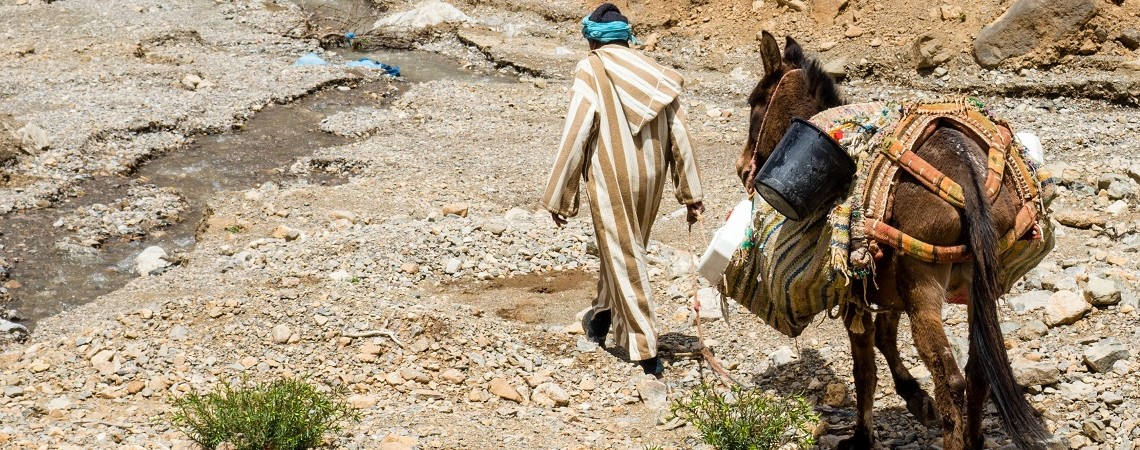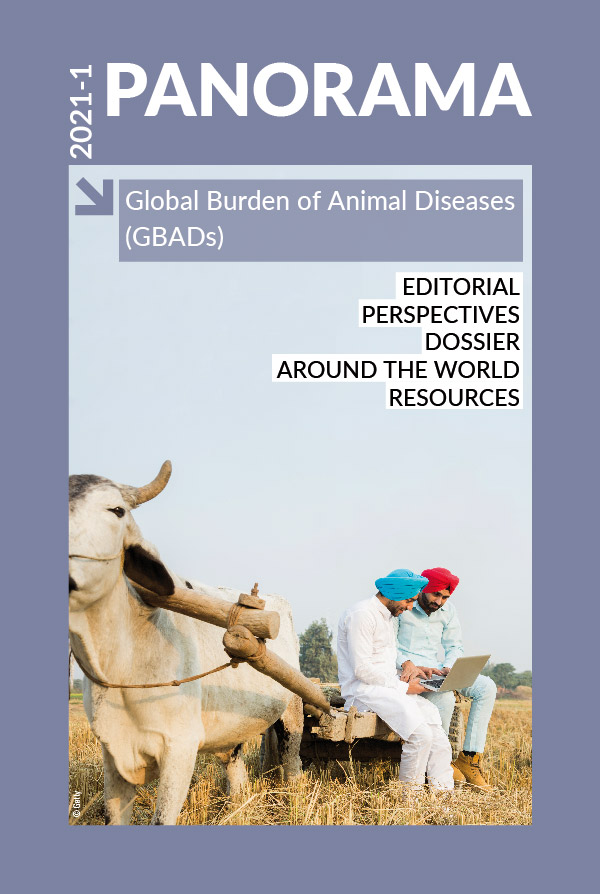Dossier Posted on 2021-08-16 11:12:57
A quantitative understanding of animal health has the potential to improve human health
Keywords
Authors
D. Pigott (1)* & B. Devleesschauwer (2, 3)
(1) Assistant Professor, Institute for Health Metrics and Evaluation, University of Washington, Seattle, WA, United States of America.
(2) Epidemiologist, Department of Epidemiology and Public Health, Sciensano, Brussels, Belgium.
(3) Visiting Professor, Department of Veterinary Public Health and Food Safety, Ghent University, Merelbeke, Belgium.
* Corresponding author: pigottdm@uw.edu
The designations and denominations employed and the presentation of the material in this article do not imply the expression of any opinion whatsoever on the part of the OIE concerning the legal status of any country, territory, city or area or of its authorities, or concerning the delimitation of its frontiers and boundaries.
The views expressed in this article are solely the responsibility of the author(s). The mention of specific companies or products of manufacturers, whether or not these have been patented, does not imply that these have been endorsed or recommended by the OIE in preference to others of a similar nature that are not mentioned.
Zoonoses
Many endemic and emerging diseases are zoonotic in origin, transmitted between humans and animals. Existing estimates of the burden of these shared pathogens would benefit from robust quantification of their status in livestock populations, especially when categorised by production system, as these factors are key determinants in human exposure and the possible human health impact. Combining veterinary and public health interventions in locations where both animal and human populations are affected is an essential part of managing these diseases. Since most emerging pathogens are zoonotic [2], routine tracking of animal health is needed to identify anomalous patterns.
Diet and food safety
Given the significant contribution of the livestock sector to global diets [3], any quantification of the quality and safety of products consumed by humans is important. Estimates of the impact of unsafe food suggest a significant but manageable burden [4]; detailing which livestock species are affected by key food-borne pathogens in which locations would enable necessary interventions in the appropriate sectors. Quantifying production losses, as well as potential losses of any dietary nutrients, will focus efforts on improving food security and enriching local diets through improved livestock health.
Future of human health
The fate of humans and livestock is inextricably linked. While forecasts of human health currently incorporate the trajectories of key risk factors, such as smoking [5], the future of livestock species is rarely addressed in a comprehensive manner through consensus processes. A robust contemporary estimate of animal health, and its effect on humans, is a necessary foundation to develop forecasts that show how animal health policies could alter human health trajectories for decades to come.
https://doi.org/10.20506/bull.2021.1.3262
References
- Murray C.J.L., Abbafati C., Abbas K.M., Abbasi M., Abbasi-Kangevari M., Abd-Allah F., Abdollahi M., Abedi P., Abedi A., Abolhassani H., Aboyans V., Abreu L.G., Abrigo M.R.M., Abu-Gharbieh E., Abu Haimed A.K., Abushouk A.I., Acebedo A., Ackerman I.N., Adabi M., Adamu A.A., Adebayo O.M., Adelson J.D., Adetokunboh O.O., Afarideh M., Afshin A., Agarwal G., Agrawal A., Ahmad T., Ahmadi K., Ahmadi M., Ahmed M.B., Aji B., Akinyemiju T., Akombi B., Alahdab F., Alam K., Alanezi F.M., Alanzi T.M., Albertson S.B., Alemu B.W., Alemu Y.M., Alhabib K.F., Ali M., Ali S., Alicandro G., Alipour V., Alizade H., Aljunid S.M., Alla F., Allebeck P., Almadi M.A.H., Almasi-Hashiani A., Al-Mekhlafi H.M., Almulhim A.M., Alonso J., Al-Raddadi R.M., Altirkawi K.A., Alvis-Guzman N., Amare B., Amare A.T., Amini S., Amit A.M.L., Amugsi D.A., Anbesu E.W., Ancuceanu R., Anderlini D., Anderson J.A., Andrei T., Andrei C.L., Anjomshoa M., Ansari F., Ansari-Moghaddam A., Antonio C.A.T., Antony C.M., Anvari D., Appiah S.C.Y., Arabloo J., Arab-Zozani M., Aravkin A.Y., Arba A.A.K., Aripov T., Ärnlöv J., Arowosegbe O.O., Asaad M., Asadi-Aliabadi M., Asadi-Pooya A.A., Ashbaugh C., Assmus M., Atout M.M.W., Ausloos M., Ausloos F., Ayala Quintanilla B.P., Ayano G., Ayanore M.A., Azari S., Azene Z.N., Darshan D.B., Babaee E. et al. (2020). – Five insights from the Global Burden of Disease Study 2019. Lancet, 396 (10258), 1135–1159. https://doi.org/10.1016/S0140-6736(20)31404-5.
- Jones K.E., Patel N.G., Levy M.A., Storeygard A., Balk D., Gittleman J.L. & Daszak P. (2008). – Global trends in emerging infectious diseases. Nature, 451, 990–993. https://doi.org/10.1038/nature06536.
- Food and Agriculture Organization of the United Nations (FAO) (2020). – Nutrition and livestock. Technical guidance to harness the potential of livestock for improved nutrition of vulnerable populations in programme planning. https://doi.org/10.4060/ca7348en.
- Havelaar A.H., Kirk M.D., Torgerson P.R., Gibb H.J., Hald T., Lake R.J., Praet N., Bellinger D.C., de Silva N.R., Gargouri N., Speybroeck N., Cawthorne A., Mathers C., Stein C., Angulo F.J. & Devleesschauwer B., on behalf of World Health Organization Foodborne Disease Burden Epidemiology Reference Group (2015). – World Health Organization global estimates and regional comparisons of the burden of foodborne disease in 2010. PLoS Med., 12 (12), e1001923. https://doi.org/10.1371/journal.pmed.1001923.
- Foreman K.J., Marquez N., Dolgert A., Fukutaki K., Fullman N., McGaughey M., Pletcher M.A., Smith A.E., Tang K., Yuan C.W., Brown J.C., Friedman J., He J., Heuton K.R., Holmberg M., Patel D.J., Reidy P., Carter A., Cercy K., Chapin A., Douwes-Schultz D., Frank T., Goettsch F., Liu P.Y., Nandakumar V., Reitsma M.B., Reuter V., Sadat N., Sorensen R.J.D., Srinivasan V., Updike R.L., York H., Lopez A.D., Lozano R., Lim S.S., Mokdad A.H., Vollset S.E. & Murray C.J.L. (2018). – Forecasting life expectancy, years of life lost, and all-cause and cause-specific mortality for 250 causes of death: reference and alternative scenarios for 2016–40 for 195 countries and territories. Lancet, 392 (10159), 2052–2090. https://doi.org/10.1016/S0140-6736(18)31694-5.










